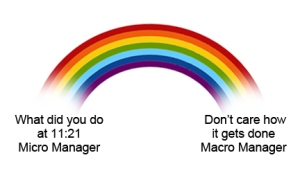Finding Mr. Right
12/01/2014 Leave a comment
Having trouble selling a product or service that you think is perfect?
 Community banks are finding themselves in this situation. More and more people are looking to outside competitors for banking assistance.
Community banks are finding themselves in this situation. More and more people are looking to outside competitors for banking assistance.
- Credit unions are supplying people with low-interest rate car loans.
- Reloadable pre-pay cards are offering an alternative to traditional checking accounts
- Mobile apps are creating new ways to pay for bills and exchange money between people
These three options are great, but here’s the catch: community banks offer some (if not all) of these services. The problem is that people either do not want do business with a bank or they are unaware that banks offer these services.
How can community banks overcome this issue?
Image Crisis
 It is no surprise that banks have received bad publicity over the past 6 years. Bank closures, bailouts and fraud have caused public opinion of banks to collapse. Unfortunately for community banks, people tend to lump big banks and local community banks together in this mess.
It is no surprise that banks have received bad publicity over the past 6 years. Bank closures, bailouts and fraud have caused public opinion of banks to collapse. Unfortunately for community banks, people tend to lump big banks and local community banks together in this mess.
To help overcome this, banks need to work on their public relations efforts by reaching out to potential customers and to the communities they serve. The issue is that many community banks are stretched thin, so it is important that a consistent message is communicated so you can maximize your exposure.
Keep a consistent message
Call it a tagline, slogan or sayin’, but whatever you call it, make sure you keep it consistent. By keeping a consistent message, people will start recognizing it. But remember, even if you and your staff are getting tired of the message, keep it up. The last thing you want to do is keep changing your message. Constant change means you are hitting the restart button with your audience.
No Exposure
 Is your bank advertising, communicating and marketing in the right places? For example, if you are wanting to grow your customer base among 20 -34 year olds, then advertising on an AM radio station between the hours of 10am – 1pm may not be the most effective place.
Is your bank advertising, communicating and marketing in the right places? For example, if you are wanting to grow your customer base among 20 -34 year olds, then advertising on an AM radio station between the hours of 10am – 1pm may not be the most effective place.
Make sure you are where your market is, and focus your attention to it.
- Research where your target market is.
- Craft a message that will get their attention and give a call to action.
- Follow through to see if your efforts are working or if it needs tweaking.
As previously mentioned, most community banks are stretched thin, so make sure your communication is done in a creative way that will get people’s attention.
Creative Communication
If a bank wants to increase the number of CDs it has, then running an average newspaper advertisement may do the job, but that doesn’t mean you can communicate the same way when trying to reach a digital based customer.
If you are trying to reach a young, digital audience, then find out where these customers are. Do you have a presence on Twitter or Instagram? If not, think about how you can translate your message on these sites. Even if you do have a social presence, what are you doing locally to get their attention? If you can effectively communicate on a digital and local level, you will amplify your message and yield stronger results.
Pay Attention
 Before jumping into new waters, be sure to research. Make sure your perfect product/service is what your intended target market wants. Once it is launched and you have communicated your message, listen to your audience. If your audience likes it, use that as a stepping stone. If your audience has issues with it, use that as a stepping stone too.
Before jumping into new waters, be sure to research. Make sure your perfect product/service is what your intended target market wants. Once it is launched and you have communicated your message, listen to your audience. If your audience likes it, use that as a stepping stone. If your audience has issues with it, use that as a stepping stone too.
The last thing a community bank wants is their efforts to backfire and blow up like a bomb.







 Early in my career, I was given some solid advice
Early in my career, I was given some solid advice
